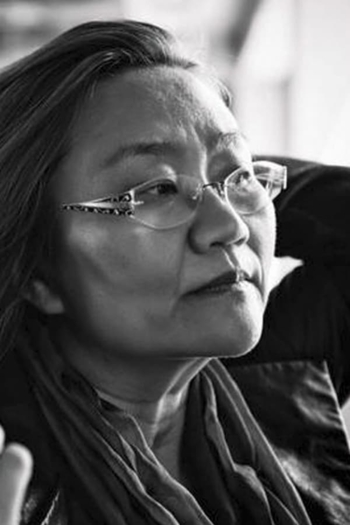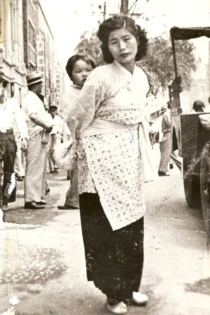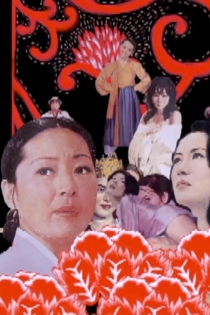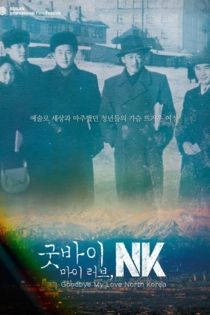
Kim So-young
1961 (64 года)경
Kim So-young
Yang Eun-yong, Kong Ye-ji
Jung-kyoung is looking for her younger sister Hoo-kyoung while Chang is a computer whiz who stays on at the rest stop after losing his job. KIM Bak is a reporter and photographer for the local Tongyeong media who frequents the rest stop. Onna is a famous blogger who works at the rest stop and dreams of a new Asian highway. It is also the virtual journey of the 880-thousand-won generation. They show the sense of loss, loneliness, and communication in this digital age. An older sister searching for a young sister who has run away from home, an animator who wanders around aimlessly after leaving his job, a reporter, and the employees of the rest stop.
Viewfinder

고려 아리랑: 천산의 디바
Kim So-young
Bang Tamara, Lee Ham-deok
The documentary starts with a diva of a tragic family history related to a history of migration. The rare archival footage reanimates her history reverberating with the current world crisis. Sound of Nomad: Koryo Arirang is a testimonial – a witness to injustice and tragedy, but it is also a declaration of survival – a survival that is not static but transformative – not brittle but fluid. The trains that displace, the deserts that separate form one harsh horizon – a historical limit – but within that limit, against it and across it are people, are a culture, not escaping but flourishing unofficially, with the affective majesty of a melody, a rhythm, an Arirang
Sound of Nomad: Koryo Arirang

아름다운 생존: 여성 영화인이 말하는 영화
Yim Soon-rye
Choi Eun-hee, Park Nam-ok
Keeping the Vision Alive is a documentary film containing the voices and images of Korean women filmmakers-both senior filmmakers and also the peers of director Yim. The film is Yim’s homage to both contemporary Korean women filmmakers, written by a filmmaker of the same age, and also to the history of women filmmakers in Korea. Yim does not reveal her own voice or opinion and lets the voices and images of the filmmakers speak for themselves through a non-interventionist camera. From the pioneers, Park Nam-ok, and Hwang Hye-mi, who directed First Experience in 70’s, to recent filmmakers, Byun Young-joo and Jang Hee-sun, the film traces their experiences, troubles, concerns and thoughts as women and women filmmakers. Keeping the Vision Alive calmly and enthusiastically encourages and celebrates the struggles, the resistance and the survival of women filmmakers in a conservative Korean film industry and a male-dominated and sexist social system. (Kwon Eun-sun)
Keeping the Vision Alive

황홀경
Kim So-young
Choi Eun-hee, Yoon Jeong-hee
"I'll Be Seeing HER" is an approach to images of women in Korean cinema with a new genre, ‘Fanta Docu’, which shows beautiful and adventurous Korean actresses in the 1950s. The director, Kim Soyoung stated that “studying and teaching Korean cinema history, I felt sorry that most documentaries on Korean cinema had been made from the male perspective,” which led her to make a documentary on Korean cinema through women’s eyes. Kim So young directed ‘Women's History Trilogy’ (Koryu: Southern Women, South Korea, I'll Be Seeing Her: Women in Korean Cinema, New Woman: Her First Song) which was screened at many international film festivals including Yamagata International Documentary Film Festival.
I'll Be Seeing Her

도시를 떠돌다
Kim So-young
This film depicts the journey of a Mexican, Roberto, resident in China. On his way to renew his visa, Roberto meets an African at a railway station between China and Hong Kong. “Why is an African in China?” soon changes into a reflexive inquiry: “Why is a Mexican in China?” Roberto explores the African residents’ community in China and finds many new friends. The film is thus multi- and trans-national, with a Korean director filming the process as a Mexican resident in China explores its African community.
Drifting City

굿바이 마이 러브NK: 붉은 청춘
Kim So-young
Where you are born is called “hometown”. What do you call where you are buried? A story about 8 North Koreans who went to Moscow Film School in 1952, and sought political asylum in 1958 after denouncing KIM Ilsung. Their lives as Koreans and as filmmakers are captured through images from Moscow to Kazakhstan.
Goodbye My Love, NK

작은 풀에도 이름 있으니
Kim So-young
Co-produced by Womenlink and the Feminist Film Collective Parituh, Even Little Grass Has Its Own Name was shot on 16mm film and was the first of its kind in Korea to address the issue of female office workers. The film is divided into two parts. Part 1 is about the conflicts of married female office workers who suffer from undertaking office work, housework, and childcare all at the same time. Part 2 focuses on single female workers who break away from being the traditional ‘flower of the company,’ and develop a greater sense of autonomy as they actively participate in forming a labor union.
Even Little Grass Has Its Own Name

푸른 진혼곡
Kim So-young
Lee Seon-mi, Yu Sso-nya
The author writes that at the moment the sun retrieved its last ray of light, the girl "sensed sensuality in the dark and watched death". The Woman at the Toy Store (OH Jeonghee) was transformed into a film, and the sexuality of the girl and woman gained the rhythm of requiem. The thrill of the moment when the positive changes to negative is, therefore, the sensuality of the cinema. Blue Requiem, the queer experimental work dedicated to the girl and the woman, arrived in the Winter Republic in 1986.
Blue Requiem

